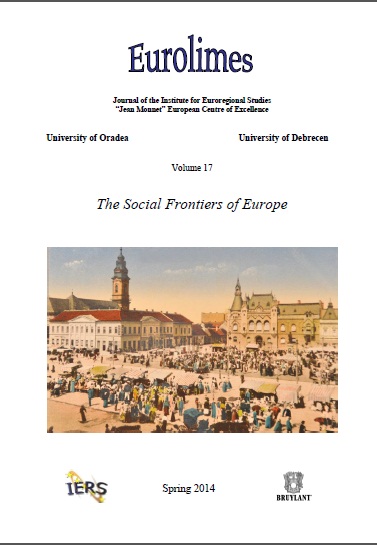Social Frontiers between the Roma Minorities and Mainstream Population in Southeast Europe (The Rough Ways of the Roma Integration)
Social Frontiers between the Roma Minorities and Mainstream Population in Southeast Europe (The Rough Ways of the Roma Integration)
Author(s): István Süli-Zakar, Klara Czimre, Ágnes PálócziSubject(s): Politics / Political Sciences
Published by: Editura Universitatii din Oradea
Keywords: social frontiers; two-speed countries; Roma minorities; Roma integration; prejudices
Summary/Abstract: The approximately 10-12 million Roma populations constitute the largest ethnic minority of the European Union. Geographically, they are mostly located in the South Eastern European EU Member States, and the solution of the Roma question constitutes a quintessential problem in the home affairs of these countries. Most of the countries are already members – or candidate members – of the European Union but their joining to the Western market economies is not lacking problems. As a consequence of the current financial and economic crisis, the EU has become even more “two-speed”. In this crisis situation the situation of the Roma population living here has become particularly hopeless. The rapid increase in the number of the Roma population in South Eastern Europe living among the conditions of the demographic explosion, as well as their geographical expansion, intensify the sensitivity of the mainstream society regarding the questions of the transforming coexistence. The shift in the ratio within the population sharpened and magnified the differences between the dissimilar lifestyle and the philosophy of life respecting the two major social groups which led to sharpening tensions. Of course, the deeply desperate Roma population makes more and more attempts in order to be able to migrate from the South Eastern European countries to the richer regions of Western Europe and North America in the hope of an easier life. They, however, face more and more obstacles. The social and economic integration of the Roma population in Southeast Europe is mainly hindered by the low level of education, the high unemployment rate, criminality and the existing prejudices against them experienced in the mainstream society. In Europe, there are many social frontiers between the mainstream and the Roma society, and the weakening and eliminating of these frontiers is a common European interest and challenge.
Journal: Eurolimes
- Issue Year: 2014
- Issue No: 17
- Page Range: 146-168
- Page Count: 24
- Language: English
- Content File-PDF

